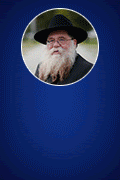Moshe summoned them and related to them everything that G-d had relayed to him on Mount Sinai. When Moshe finished speaking with them, he placed a mask upon his face.
The Torah further relates that whenever Moshe came before G-d to speak with Him, he would remove the mask. He would then go out and convey all that he had been instructed to the people of Israel. Moshe would then replace the mask upon is face until he would come to speak with G-d once again.
The Weekly Sedra – Parshas Ki Sisa – Do Jews Have Horns?
In the Torah portion that we read this Shabbos, Parshas Ki Sisa, the Torah relates that when Moshe came down from Mount Sinai with the second set of Tablets, the skin of his face was radiant. When Aaron and the people of Israel saw that his face was shining with a brilliant light, they were afraid to approach him.
Moshe summoned them and related to them everything that G-d had relayed to him on Mount Sinai. When Moshe finished speaking with them, he placed a mask upon his face.
The Torah further relates that whenever Moshe came before G-d to speak with Him, he would remove the mask. He would then go out and convey all that he had been instructed to the people of Israel. Moshe would then replace the mask upon is face until he would come to speak with G-d once again.
This, incidentally, is the source of Michelangelo’s famous sculpture of Moshe with horns. The word that the Torah uses to describe Moshe’s radiance is the word “Koran” which also means horns. The mistranslation of this word has led Michelangelo and others to the erroneous idea that Moshe actually grew horns. Some people, to this very day, believe that all Jews have horns.
Getting back to our topic, a mask is a filter. It conceals, but it also protects. One who wishes to come in contact with something that is alien and threatening makes use of a mask to filter his involvement. But a mask can also be a barrier.
For forty years Moshe was in the unique position of receiving wisdom and instruction directly from G-d and conveying it to the children of Israel. Moshe refused to use a mask while he received and transmitted the word of G-d. This endeavor permitted no barriers. Nothing was allowed to mitigate the intensity of his mission.
Moshe insisted on communicating with his students directly, despite the fact that they were initially intimidated by the Divine radiance reflected on his face. But at all other times, Moshe covered his face. He made use of the screening qualities of his mask.
Herein lies an important lesson for all descendents of Moshe for all times. It sheds light on our mission as the students and disciples of “Moshe Rabainu” Moshe our teacher.
Everything that concerns our relationship with G-d – our spiritual development and faith – should be approached without a mask, without inhibition or constraint. No matter how lofty and intimidating our endeavor may seem, we are in our element, we have no need for attenuators or compromise. In this case, a mask can only harm. It can only temper the magnitude and effectiveness of the experience.
But when it comes to our material existence we must indeed use a mask, we must maintain a comfortable distance. Here the Jew must don an intellectual and emotional filter: one must realize that he or she is treading on alien and potentially harmful terrain. We must get involved, but not too involved. Here we must filter our involvement, taking care not to become absorbed in earthliness and mundanity.
The idea of masking and unmasking is similarly manifest throughout the story of Purim, the holiday that we celebrated just a few days ago.
G-d’s name is completely concealed in the Megillah, it is not even mentioned once. The miracle of Purim is one in which the hand of G-d worked its way within the realm of nature. It is incumbent upon us to recognize and proclaim the glory of G-d and his ways – and to unmask the hiddeness of G-d in this world and making it a more humane and G-dly abode.













wow
Wow thats amazing! truly inspiring!
I always thought that the reason people think that jews have horns is bec the yalis have payos, and they think that thats what it is. cool
Boruch N. Hoffinger
Excellent! B”H
Then to compound the ignorance Sigmund Freud (some say ‘fraud’) wrote a paper called: ‘The Moses of Michelangelo, of which the publisher said: ‘…were it not that the author’s name was Sigmund Freud, I would have not published it.’
The buck stops here!
Likutei Sichos
Another Tvar Torah…
The prophet Eliyahu held a debate with the false prophets of Ba’al during which he challenged them: “How long will you waver between two opinions”. If Hashem is the G-d, follow Him! And if it is the Ba’al, follow him” (1 Kings, 18:21). One may wonder how Eliyahu was able to utter such an option.
The Rebbe explains the difference between outright idolatry and idolatry which is fence-sitting. Outright idolatry means a person really believes he benefits from his idol. A fence-sitter is in doubt – either he’s unsure as to what to believe in, or he believes in Hashem plus something else.
The Rebbe continues and says, that wavering between two opinions is in many ways WORSE than outright idolatry. GENERALLY, outright idolatry is worse of course. But in terms of TESHUVA, the fence-sitter is worse because it’s harder for him to do Teshuva fully.
Why?
1) Because someone who once believed in idolatry, who realizes he was wrong, can fully do Teshuva. The one who wavers and believes in Hashem plus something else or doubts, doesn’t do a full Teshuva because he claims he always believed in G-d.
I.e. He is uncertain weather he sinned in the first place.
2) The one who fully believes in idolatry can be a spiritual individual, just a misguided spiritual individual.
But the one who wavers shows that not only is he not interested in the true G-d, but he is spiritually insensitive. Although he knows Hashem is G-d, he is still willing to give idols some credit, thinking he’ll benefit in some way. Even when he realizes the truth, he does Teshuva only because of personal gain.
I.e. He is willing to compromise some of his religious beliefs for the sake of convenience or social pressure (his spirituality is corrupted by materialism).
3) The one who wavers leads others astray because it is not clear that he is a heretic. The idol-worshiper, however, is an outright heretic and is thus an outcast that does not effect the Community. I.e. nobody gets confused by him.
(Likutei Sichos Vol. 1, p183ff.)
shlemazel
lekutei sichos
what has that got to do with moshe having horns????
dont understand
boruch h.
can you write the whole letter i didnt get it who is sigmund freud and what did he write?